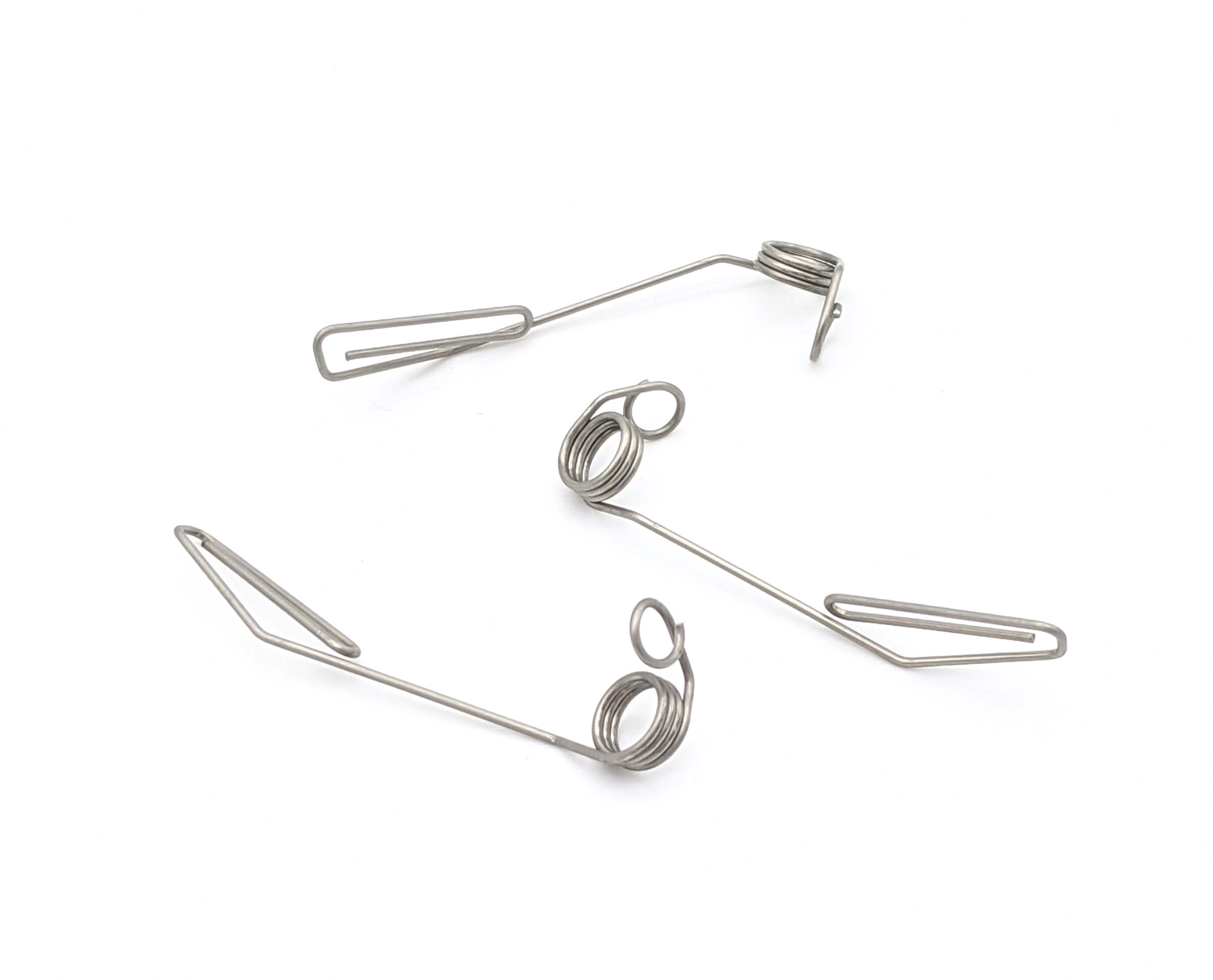Get unique, complex parts easily. No matter your requirements, Chaoyi Spring creates hard-to-produce coil springs and wire forms.
Let us help you create the custom wire form you need, from S-hooks and J-hooks to utility hooks and more.
We work closely with customers across a wide range of industries, helping them design and manufacture made-to-order parts.
Why choose Chaoyi Spring? We prioritize customer-focused collaboration, modern equipment and the latest technology to make your parts per print.
Find the information and guidance you need, from measuring a spring to learning about materials, placing an order and much more.
Torsion springs, often overlooked, are unsung heroes in the world of mechanics. They are simple, yet powerful, devices that harness the energy of a twist to perform a variety of


Torsion springs, often overlooked, are unsung heroes in the world of mechanics. They are simple, yet powerful, devices that harness the energy of a twist to perform a variety of functions. From the delicate click of a mouse to the robust action of a garage door, these springs are responsible for a surprising range of everyday tasks. But how do they work, and what makes them so special? This article delves into the world of torsion springs, exploring their mechanics, applications, and the reasons why they are so vital in modern design.

At their core, torsion springs are marvels of simplicity. They consist of a length of coiled wire, often steel, that stores energy when twisted. Unlike extension or compression springs, which rely on stretching or squeezing, torsion springs store energy by rotating. The force they exert is proportional to the angle of twist, meaning the more you twist, the stronger the force becomes.
The design of a torsion spring can vary significantly, with factors like the wire diameter, coil diameter, and number of coils influencing its spring rate (the amount of force required to twist it). These variations allow for a wide range of applications, from tiny springs in watches to massive springs in industrial machinery.
Torsion springs are truly versatile components, finding their way into countless applications across various industries. Here are some examples:
Consumer Products: Think about the satisfying click of a ballpoint pen. That's the work of a tiny torsion spring! They are also crucial in the smooth opening and closing mechanisms of laptop screens, the smooth operation of retractable pens, and the precision of camera shutters.
Automotive: Torsion springs are critical in suspension systems, offering a smooth ride and stability. They're also used in power windows, door hinges, and even the mechanism that opens your trunk.
Industrial Equipment: Think of the heavy-duty springs in a garage door opener or the tension in a clothesline. These are often torsion springs, providing the necessary power to lift and hold objects. They are also employed in machinery, where they control movements, manage tension, and prevent unwanted vibrations.
Medical Devices: From the precision of surgical instruments to the smooth operation of medical equipment, torsion springs play a critical role. They are also used in dental instruments, prosthetics, and even in the intricate mechanisms of medical implants.
The popularity of torsion springs is driven by several factors.
Versatility: As we have seen, torsion springs can be tailored to perform a wide range of tasks, from delicate to heavy-duty. They can be used to create a smooth, predictable force, or to provide a quick, powerful action.
Reliability: Torsion springs are known for their durability and long lifespan. They are often made from high-quality materials and can withstand a significant number of cycles without losing their springiness.
Compact Design: Their compact size and ability to store energy efficiently make them ideal for situations where space is limited. They can easily be integrated into complex mechanisms without taking up too much room.
Cost-Effectiveness: Torsion springs are generally affordable to manufacture, making them a cost-effective solution for a wide range of applications.
The world of torsion springs is more complex than meets the eye. While we've touched upon the basics, there's a lot more to explore. For instance, torsion springs are often used in combination with other spring types, or with mechanisms that amplify their force. There are also specific types of torsion springs designed for specialized applications, such as the constant-force spring, which provides a consistent force regardless of the angle of twist.
Furthermore, the development of new materials and manufacturing processes is constantly pushing the boundaries of torsion spring technology. This allows for even smaller, more precise, and longer-lasting springs, opening up new possibilities for applications.
Torsion springs are truly remarkable components. Their ability to store and release energy through twisting motion makes them essential in countless everyday devices and industrial machinery. While they often operate unseen, their impact on our world is undeniable. As we continue to push the boundaries of engineering and design, torsion springs will undoubtedly play an increasingly important role in shaping our future.
In a world driven by innovation and efficiency, the seemingly simple torsion spring stands as a testament to the power of clever engineering. Their unassuming design masks their profound impact on our daily lives, making them a true marvel of mechanics. As we move forward, understanding and appreciating these springs will become even more crucial, as their potential continues to evolve alongside the ever-changing world of technology.
Browse some of the custom wire forms and springs that we manufacture. Don’t see what you need? We specialize in made-to-order products that meet your application requirements.
Visit Our GalleryNeed a custom wire form or coil spring? We make it work. Fill out the contact form and a representative will respond within 1 business day. If you have a PDF or CAD file, you can submit to request a quote.